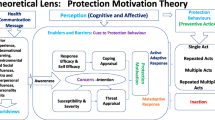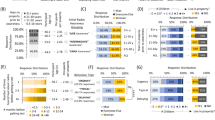Abstract
Background
Lung cancer is the leading cause of cancer-related deaths in the United States, and radon exposure is the second leading risk factor. Fewer than 25% of existing U.S. homes have been tested for radon, and only 5–10% of new homes use some form of radon prevention.
Objective
This qualitative study sought to determine radon-related knowledge, attitudes, and practices among Realtors to inform cancer control activities at local and state levels.
Methods
We conducted focus groups with Realtors in four states to collect information about knowledge, attitudes, and practices regarding radon.
Results
Realtors reported obtaining information on radon in similar ways, being aware of radon and its characteristics, and dealing with radon issues as a normal part of home sales. Differences in attitudes toward testing varied across states. Realtors in states with radon policies generally expressed more positive attitudes toward testing than those in states without policies. Radon mitigation was identified as an added expense to buyers and sellers. Realtors cited concerns about the reliability and credibility of mitigation systems and installers.
Conclusions
These findings suggest that attitudes and practices vary among Realtors and that additional educational resources about radon as a cancer risk factor may be beneficial. When comprehensive cancer control programs update their plans, they may want to add objectives, strategies, or activities to reduce radon exposure and prevent lung cancer. These activities could include partnering with Realtors to improve their knowledge, attitudes, and practices about radon, as well as developing and distributing radon educational resources.
Similar content being viewed by others
References
U.S. Cancer Statistics Working Group (2017) United States cancer statistics: 1999–2014 Incidence and Mortality Web-based Report. https://nccd.cdc.gov/uscs/. Accessed 4 Oct 2017
National Research Council (NRC) Committee on health risks of exposure to radon, board on radiation effects research (1999) Commission on life sciences, health effects of exposure to radon (BEIR VI). National Academies Press, Washington DC
Samet JM, Avila-Tang E, Boffetta P, Hannan LM, Olivo-Marston S, Thun MJ et al (2009) Lung cancer in never smokers: clinical epidemiology and environmental risk factors. Clin Cancer Res 15(18):5626–5645
Lubin JH, Wang ZY, Boice JD, Xu JR,ZY, Blot WJ, Wang LD et al (2005) Risk of lung cancer and residential radon in China: pooled results of two studies. Int J Cancer 109:132–137
Darby S, Hill D, Auvinen A, Barros-Dios JM, Baysson H, Bochicchio F, Deo H, Falk R, Forastiere F, Hakama M, Heid I, Kreienbrock L, Kreuzer M, Lagarde F, Mäkeläinen I, Muirhead C, Oberaigner W, Pershagen G, Ruano-Ravina A, Ruosteenoja E, Rosario AS, Tirmarche M, TomáBek L, Whitley E, Wichmann HE, Doll R (2005) Radon in homes and risk of lung cancer: collaborative analysis of individual data from 13 European case–control studies. Br Med J. https://doi.org/10.1136/bmj.38308.477650.63 (Online Paper)
Krewski D, Lubin JH, Zielinski JM, Alavanja M, Catalan VS, Field RW, Klotz JB, Létourneau EG, Lynch CF, Lyon JI, Sandler DP, Schoenberg JB, Steck DJ, Stolwijk JA, Weinberg C, H.B. Wilcox (2005) Residential radon and risk of lung cancer: a combined analysis of 7 North American case-control studies. Epidemiology 16(2): 137–145
EPA (U.S. Environmental Protection Agency) (2013) Home buyers and sellers guide to radon. https://www.epa.gov/sites/production/files/2015-05/documents/hmbuygud.pdf. Accessed 4 Oct 2017
HHS (U.S. Department of Health and Human Services) (2009) The surgeon general’s call to action to promote healthy homes. U.S. Department of Health and Human Services, Office of the Surgeon General, Rockville
Angell WJ (2008) The US radon problem, policy, program and industry: achievements, challenges and strategies. Radiat Prot Dosim 130(1):8–13
EPA (U.S. Environmental Protection Agency), HHS (U.S. Department of Health and Human Services), USDA (U.S. Department of Agriculture) et al (2011) Protecting people and families from radon: a federal action plan for saving lives. US Environmental Protection Agency, Washington, DC
CDC (Centers for Disease Control and Prevention). National Comprehensive Cancer Control Program (NCCCP). https://www.cdc.gov/cancer/ncccp/. Accessed 4 Oct 2017
Neri A, Stewart SL, Angell W (2013) Radon control activities for lung cancer prevention in national comprehensive cancer control program plans, 2005–2011. Prev Chronic Dis 10:E132
Promising practices brief: how to reduce radon in homes (2018) https://www.cdc.gov/cancer/dcpc/prevention/policies_practices/radon/. Web 2 Oct 2018
Acree P, Puckett MC, Neri AJ (2017) Evaluating progress in radon control activities for lung cancer prevention in National Comprehensive Cancer Control Program Plans, 2011–2015. J Community Health 42(5):962–967
Bernard HR, Ryan GW (2009) Analyzing qualitative data: systematic approaches. SAGE, Thousand Oaks
National Association of Realtors (2018) https://www.nar.realtor/. Web 2 Oct 2018
ATLAS.ti. Qualitative Data Analysis. Version 6.2.28
Ulin PR, Robinson ET, Tolley EE (2005) Qualitative methods in public health. Jossey Bass Inc, San Francisco (this in the radon report)
Lincoln YS, Guba EG (1985) Naturalistic inquiry. Sage, Newbury Park
Kidd PS, Parshall MB (2000) Getting the focus and the group: enhancing analytical rigor in focus group research. Qualitative Health Res 10(3):293–308
Padgett DK (2008) Qualitative methods in social work research, vol 36. Sage, Los Angeles
Campbell JL, Quincy C, Osserman J, Pedersen OK (2013) Coding in-depth semistructured interviews: problems of unitization and intercoder reliability and agreement. Sociol Methods Res 42(3):294–320
National Association of Realtors. Realtor Technology Survey. https://www.nar.realtor/reports/2013-14-realtor-technology-survey. Web 2013
Centers for Disease Control and Prevention (2017) Lung cancer. https://www.cdc.gov/cancer/lung/index.htm. Accessed 27 June 2017
Disclaimer
The findings and conclusions in this report are those of the authors and do not necessarily represent the official position of the Centers for Disease Control and Prevention. Use of trade names is for identification only and does not imply endorsement by the U.S. Department of Health and Human Services.
Author information
Authors and Affiliations
Corresponding author
Rights and permissions
About this article
Cite this article
Momin, B., McNaughton, C., Galanek, J.D. et al. A qualitative study of Realtor knowledge, attitudes, and practices related to radon health effects: implications for comprehensive cancer control. Cancer Causes Control 29, 1249–1255 (2018). https://doi.org/10.1007/s10552-018-1086-0
Received:
Accepted:
Published:
Issue Date:
DOI: https://doi.org/10.1007/s10552-018-1086-0




